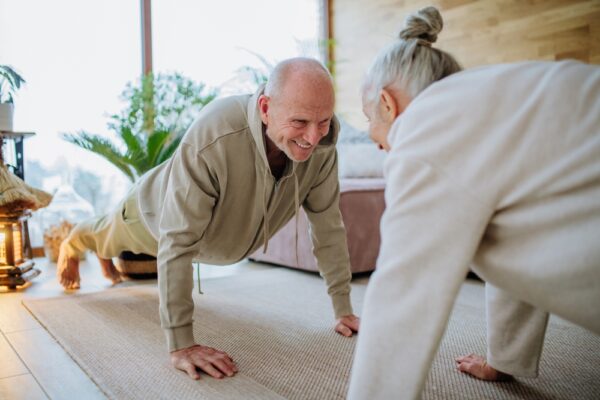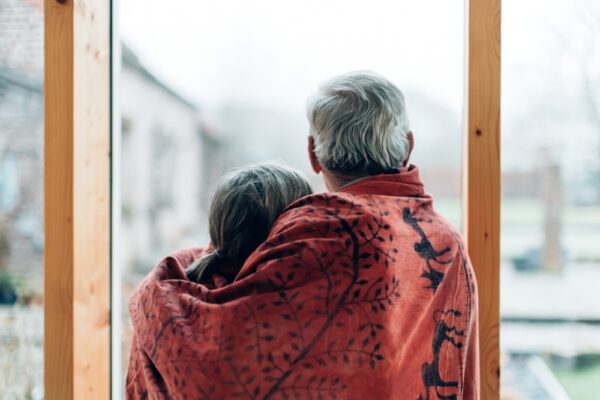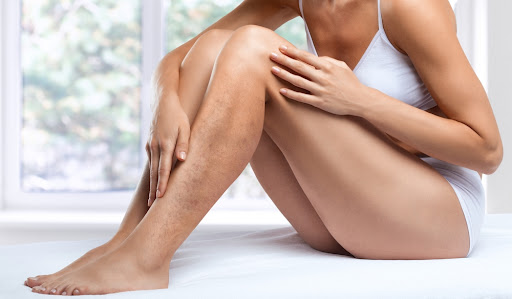Cold weather affects varicose veins by making blood vessels constrict, increasing swelling and pain. This article explores how winter weather affects varicose veins and provides tips for managing symptoms.
How Winter Weather Impacts Varicose Veins

Winter weather brings its own set of challenges for those with varicose veins. Cold temperatures cause our blood vessels to constrict, which can worsen swelling and discomfort associated with varicose veins. The impaired circulation during cold weather exacerbates the symptoms, making the legs feel achy and heavy, and often leads to swollen ankles. It’s not uncommon for the symptoms to become more problematic due to the increased stress the body undergoes to maintain warmth.
Contrary to what you may think, the cold weather doesn’t always bring immediate relief. While some might experience temporary pressure relief in the calves and ankles due to the colder temperatures, this is often short-lived and doesn’t necessarily improve the overall condition.
The malfunctioning valves in varicose veins cause blood to backflow and pool, leading to worsened symptoms, especially when we are active. Thus, the winter months can be a double-edged sword for vein health, presenting both benefits and challenges.
Protecting your veins during winter helps control varicose vein symptoms. From wearing appropriate clothing to using compression stockings, there are various strategies to manage the discomfort and maintain healthy veins. Understanding these dynamics helps in developing a comprehensive approach to vein health during the colder months.
Increased Circulatory Pressure in Cold Weather
As temperatures drop, our bodies must work harder to maintain warmth, which increases pressure on our veins and can exacerbate some symptoms of varicose veins. This added strain on the circulatory system can cause blood to pool in the veins, leading to slower blood circulation. The increased blood pressure in the veins can further contribute to discomfort and the overall severity of varicose vein symptoms.
In colder temperatures, the heart might need to accelerate its pumping rate to manage these changes, impacting the veins significantly. This heightened activity further stresses the circulatory system, so taking preventive measures can help maintain healthy blood flow and reduce winter’s adverse effects on varicose veins.
Benefits of Vasoconstriction
While cold weather can worsen some varicose vein symptoms, it also brings a silver lining through vasoconstriction. This process involves the constriction of blood vessels, which can aid in better functioning of the valves in varicose veins. Vasoconstriction helps reduce swelling and improve the overall condition of varicose veins by enhancing optimal blood flow through reduced vein size.
Exposure to cold can also soothe the veins, temporarily alleviating symptoms like heaviness and swelling in the legs. Understanding and leveraging the benefits of vasoconstriction allows for a more nuanced approach to managing varicose veins in winter.
Risks of Reduced Activity During Winter
The winter season often leads to a more sedentary lifestyle, which can negatively affect blood circulation and worsen varicose vein symptoms. With the temperatures dropping, it’s tempting to stay indoors and reduce physical activity, but this can result in blood pooling in the veins and increased discomfort.
Inactivity during the colder months hinders effective blood flow, making it challenging for blood flow to return from the legs. Prolonged sitting or standing, whether during travel or at home, can further impede circulation and contribute to venous disease problems.
Thankfully, there is a simple solution to the winter vein blues. Staying active indoors promotes healthy circulation and supports vein health during winter, mitigating these risks.
Managing Varicose Veins in Winter

Managing varicose veins during winter requires a comprehensive approach, especially for those developing varicose veins.
The best strategies for mitigating winter symptoms of varicose veins include:
- Staying active indoors to promote healthy blood flow and prevent vein problems from worsening.
- Wearing compression stockings to enhance circulation and support veins.
- Maintaining a healthy diet and proper hydration to support vein health.
By incorporating these practices into your daily routine, you can alleviate symptoms and support overall vein health in cold weather months.
Staying Active Indoors
Staying active during winter promotes healthy blood flow and prevents vein problems from worsening. Regular exercise and physical activity help maintain healthy veins, even in cold weather. Indoor activities like yoga and home exercises are excellent options to counteract the effects of cold weather on veins.
Avoid repetitive running on hard surfaces during winter workouts in order to reduce discomfort and focus on lower leg muscle exercises instead. Daily stretching and elevating your legs can alleviate symptoms like aching and swelling in varicose veins. A conscious effort to stay active indoors greatly aids in managing varicose veins during winter.
Wearing Compression Stockings
Wearing compression stockings is a highly effective way to promote vein health and assist blood circulation. Compression stockings enhance circulation and support veins, making them vital for managing varicose veins no matter the weather.
However, during winter, compression stockings are more comfortable to wear due to cooler temperatures. They help reduce symptoms like leg pain, swelling, and discomfort, providing relief and improving overall vein health. Using special compression stockings daily can significantly reduce varicose vein symptoms and support healthy circulation.
Hydration and Diet
Hydration and a balanced diet are crucial for supporting vein health. Hydrated blood flows more freely, easing pressure and diminishing varicose vein issues. Drinking water thins the blood, improving circulation and reducing pressure on the veins.
A balanced diet rich in fiber and bioflavonoids promotes smooth blood flow and supports vein health. Consuming sufficient water and nutritious foods helps maintain skin health and mitigate dryness caused by cold weather.
Here are some nutritious foods to consider:
- Leafy Greens: Spinach, kale, and Swiss chard are rich in bioflavonoids and antioxidants that support healthy blood flow.
Berries: Blueberries, strawberries, and blackberries are high in vitamin C and antioxidants, which can strengthen blood vessels and improve circulation. - Citrus Fruits: Oranges, lemons, and grapefruits are packed with vitamin C, promoting collagen production and vein health.
Nuts and Seeds: Almonds, walnuts, and flaxseeds provide healthy fats and omega-3s that enhance blood circulation. - Whole Grains: Oats, quinoa, and brown rice are excellent sources of fiber, aiding in reducing blood pressure and supporting healthy veins.
- Garlic and Onions: These contain allicin, which can help improve blood flow and reduce inflammation in the veins.
- Dark Chocolate: Rich in flavonoids, dark chocolate can improve circulation and support overall vascular health.
By including these foods in your winter diet, you can help manage varicose vein symptoms and maintain healthy veins.
Further, avoiding high sodium intake and excessive alcohol consumption is also important, as these can contribute to fluid retention and dehydration, worsening varicose veins.
Winter Vein Treatment Options
Winter is an opportune time to address vein issues, allowing for complete recovery before summer. Undergoing vein treatments in winter leads to easier recovery due to less physical activity, which is beneficial for healing post-treatment.
Minimally invasive options like Sclerotherapy, Ambulatory Phlebectomy, and Radiofrequency Ablation are excellent choices during winter. Winter clothing allows for easy concealment of bruising from vein treatments, making them less noticeable. Consulting with vein specialists about these treatments can help you choose the best option for your needs.
Schedule Your Varicose Vein Treatment at The Vein Centre in Nashville, TN
If you’re curious about varicose vein treatment this winter, we’re here to help. The Vein Centre in Nashville, TN, offers advanced vein treatments tailored to your needs. Our experienced vein specialists are dedicated to helping you achieve optimal vein health, whether you’re dealing with varicose veins, spider veins, or other vein issues.
Schedule an appointment today to explore your treatment options and take the first step toward healthier veins. Visit The Vein Centre in Nashville, TN, for expert care and relief from varicose vein symptoms. Your journey to improved vein health starts here!
Protecting Your Skin and Veins
Protecting your skin and veins during winter is also crucial. To prevent dry skin, it’s essential to moisturize regularly, particularly for your legs, ankles, and feet. Moisturizing helps keep skin healthy and reduces irritation related to varicose vein symptoms.
Appropriate clothing for cold weather protects your skin and veins from harsh conditions. Monitoring changes in your legs during winter aids in early detection of potential issues.
By taking these steps, you can support vein function and reduce dryness-related discomfort.
Preventing Future Complications

Preventing future complications involves maintaining a healthy weight to alleviate pressure on veins and prevent varicose veins. Taking breaks to stretch your legs and flex your ankles during long travel can help maintain healthy veins and reduce the risk of blood clots.
Compression stockings narrow swollen veins and improve blood flow to the heart. Supportive shoes provide better stability and reduce strain on the legs, aiding circulation.
Seek help from a vein specialist if you experience increased pain, swelling, or skin changes. By taking proactive steps, you can prevent future complications and maintain healthy veins.
Summary
In summary, winter can pose significant challenges for those of us dealing with varicose veins. Understanding how cold weather impacts our veins, the benefits and risks associated with it, and the strategies to manage symptoms can make a world of difference. Staying active indoors, wearing compression stockings, maintaining a healthy diet and hydration, and considering winter vein treatments are all effective ways to manage varicose veins during the winter season.
By taking these proactive measures, you can alleviate symptoms and support overall vein health. Don’t let the winter cold take a toll on your veins—take action today to ensure a comfortable and healthy winter season.
Frequently Asked Questions About Varicose Veins in the Winter
How does cold weather affect varicose veins?
Cold weather affects varicose veins in multiple ways. First, increased atmospheric pressure from winter weather can increase stress on the veins and make some symptoms worse. On the other hand, the colder weather can temporarily relieve some symptoms like swelling and cramps.
What are the benefits of wearing compression stockings in winter?
Wearing compression stockings in winter enhances blood circulation and offers support for your veins while remaining comfortable in cooler temperatures. These stockings can significantly reduce symptoms such as leg pain, swelling, and discomfort.
How can I stay active indoors during winter to manage varicose veins?
Staying active indoors during winter is crucial for managing varicose veins; consider incorporating yoga, home exercises, and daily stretching into your routine. Additionally, regularly elevating your legs can significantly alleviate symptoms like aching and swelling.
What dietary habits support vein health during winter?
To support vein health during winter, prioritize staying hydrated and consuming a balanced diet rich in fiber and bioflavonoids. Additionally, limit high sodium intake and excessive alcohol to prevent fluid retention and dehydration.
Are there specific vein treatments recommended for winter?
Minimally invasive vein treatments such as Sclerotherapy, Ambulatory Phlebectomy, and Radiofrequency Ablation are highly recommended for winter due to easier recovery and reduced physical activity, which aids in healing.



